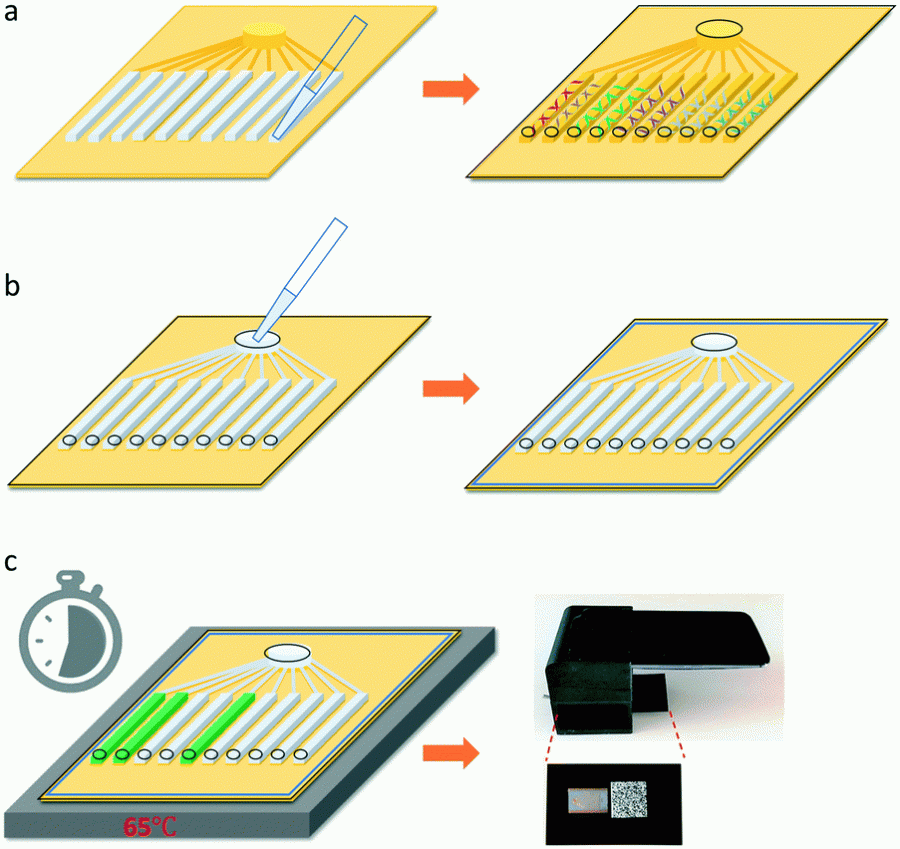University researchers lead team to develop smartphone testing for COVID-19
Photo Courtesy of Lab On A Chip
A graphic in the researchers’ paper shows how the test would work.
April 27, 2020
A team of University researchers are developing a smartphone-based system to detect COVID-19 without the need of a lab.
Five years ago, engineering professors Brian Cunningham and Rashid Bashir received a National Science Foundation grant to demonstrate a smartphone-based system for detecting pathogens.
Their original target for detection was horse respiratory viruses. They were able to build a system which could detect the virus off nasal swabs with the help of a smartphone.
When their smartphone method with horse viruses was compared to the polymerase chain reaction method, the standard lab method currently used for coronavirus, “the sensitivity was nearly the same,” Cunningham said.
Now, Cunningham, Bashir and Bill King, another engineering professor, are leading a team to use the same smartphone approach for detecting COVID-19.
Get The Daily Illini in your inbox!
The goal is to make a detection system on a clip-on device, which would cost around $50, Cunningham said. To perform the test, a person would need a nasal swab sample, cartridge and a smartphone with the attached clip.
“What we’re seeking to do is to have a really inexpensive and really prevalent testing that could be done in all sorts of scenarios so that the economy and society can open up again,” Cunningham said.
How it works
A nucleic acid test is performed on the nasal swab sample inside a microfluidic chip that has small “compartments.” Each compartment had a special molecule, which would recognize the genetic sequence of the pathogen the researchers wanted to detect.
The sample would undergo a chemical reaction to generate fluorescence. Using a cradle with the chip attached that snaps onto the back of a smartphone, the back-facing camera of the smartphone would take an image of the fluorescence from the chip.
The result takes about 30 minutes.
The phone’s back-facing camera then takes a picture of the cartridge and a software processes the image to determine the fluorescence intensity.
The software would be able to run on the phone, or send the image off to a server, and have a computer perform the image processing to tell if the sample has the virus.
Cunningham envisions this test being used for all passengers boarding an airplane, in which only those who test negative would be allowed on. This can also be done at conferences, theme parks, meetings and sporting events.
The team also worked on detecting blood-based mosquito-borne viruses such as Zika, Chikungunya and Dengue, using the same smartphone-based detection approach.
Cunningham’s vision was to be able to perform diagnostics tests for food and water contamination or sick animals, using the phone as the detection system.
Cunningham compared the smartphone system to a service like “Uber for pathogens,” in which the phone would take the measurement and communicate the results to a physician.
Future
After successful testing of the smartphone application with horse respiratory viruses, the group’s research was published in nanotechnology journal Lab on a Chip on April 21.
Cunningham said they’ve submitted an application for emergency funding to the National Institutes of Health for their new project, but are still waiting to hear back as of April 21.
“Those two pieces of work put us in a great position now in the future to work on COVID diagnostics, which work is ongoing,” Bashir said.







